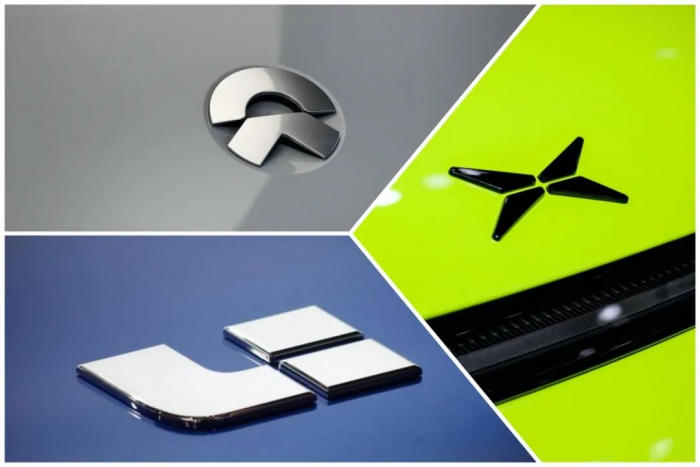Author: Jiaxing Li
Looking back ten years ago, when I wanted to buy a Top Gear Mercedes-Benz, what should I do? I would go to the 4S store, experience the sales staff’s respectful service, select the goods, pay the bill, and then drive away with a temporary license plate. Except for “first maintenance” or “warranty expiration”, I seemed to have no more interaction with the Mercedes-Benz service.
Fast forward to 2021, buying a new product from a new carmaker can be achieved by just being in bed. I no longer need to consider whether there are any cars that I want, whether the 4S store is open at the current time, or even if I want to see the car in the middle of the night. I just need to download the corresponding brand’s app to view the product information and configuration, and complete the car reservation and payment by swiping my fingers on the app.
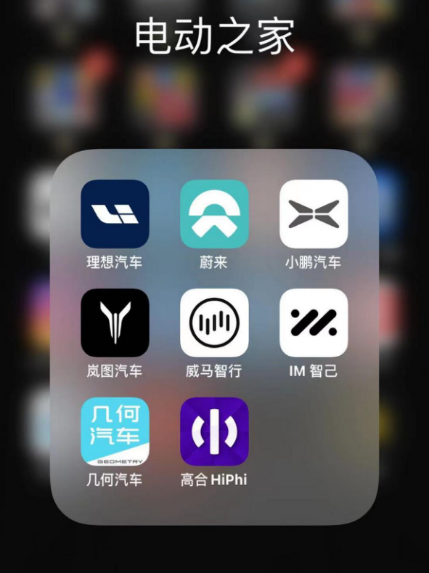
No matter what the reason is, as soon as you download the app of a new carmaker, congratulations on being trapped in the new carmaker community. As a long-term spy who has been “infiltrated” into various new carmaker communities, I will lead you to interpret how new carmakers lure users to become “ardent fans” of their community and brand step by step.

First of all, we must be clear: why are new carmakers making every effort to create a community culture? First of all, as a brand’s private domain space, the content and overall development direction of the community are controlled by the operation personnel. When a community culture is formed, user stickiness and brand loyalty will greatly increase. With community culture, the “word of mouth” phenomenon will occur within the brand. The increase of community traffic basic number represents that the product is being recognized by more people, which can increase the attention of the product and brand in the market, and then improve sales and reputation.
When a user fills in their mobile phone number and successfully registers in the app, the brand will have service personnel to follow up, whether this user is a potential consumer or a bystander, the follow-up personnel will use a sincere and positive attitude to make users have a good impression of the brand’s service. The KPI of the follow-up personnel is to further attract users’ attention to the app, thereby achieving the goal of attracting new users to the app.
Using “combo moves” to integrate users into the community
“Whether you buy it or not, let’s be friends”, the new carmaker’s app and community have no threshold, even non-car owners can participate in the community activities and discussions within the app. This operation can greatly increase the user base of the app. The larger the user base, the more effective the community activities and product promotion.
“From resistance to attention”For car owners, even if I have the brand’s app, I am consuming a means of transportation, not a member of the app. Whether or not I have the app does not affect my actual use of the car, so I don’t need to waste time in the app. Therefore, in order to ensure user retention in the app for deep “brainwashing” and “word of mouth” operations, the routines of new automakers are to place various auxiliary car functions such as remote control of vehicles, vehicle status queries, and after-sales services in the app, making it difficult for car owners to get rid of their dependence on the app.
At the same time, all new automaker communities are creating “traffic-capturing products.” However, the traffic-capturing products of new automakers are not physical items, but bring benefits to users through the use of the app. Users who continue to use the app and are active in the community for the long term can earn points which can be used to “harvest wool” in the in-app store. Continuously providing users with benefits to increase traffic and improve user retention is the primary task of creating an app. Such routines are ever-changing and not only applicable to car owners, but also to potential consumers and onlookers. After all, accumulating traffic and ensuring user retention is the primary task of creating an app.
The new automaker’s community marketing approach is similar to soft marketing, which is a process from “stranger” to “acquaintance” until the transaction is completed. Therefore, when a user chooses to keep the app on their phone, it represents that the app has some value to the user, and the community marketing has a further development foundation. At the same time, this user has also taken a big step in the community marketing “routine.”
“From Attention to Contact”
Going back to the initial question, what is the purpose of users downloading the app? In fact, it is for selecting or visiting new automaker products. For a car, product reputation is just as important as the configuration. The information spread in the community is a kind of benefit provided by the community to car owners and potential customers. In the community, users can see the evaluations of old car owners and the thought process during purchasing, and this resource is enough to lure users to click into the section to find out more.
“From Contact to Approval”When users begin to browse community content, the new forces of car manufacturing companies begin to showcase their C-end user operations capabilities. Take We Xiaoli, one of the “three giants,” for example. Apart from product information, the content that users see in We Xiaoli’s community can be divided into three parts: “topics,” “activities,” and “KOC content.”
Taking the distinct features of XPeng as an example, the community of XPeng offers a service that is very suitable for its positioning of young consumer groups–color-changing services are provided at offline stores, allowing young consumers to express their personality in their own products. At the same time, the “Multicolored Car Life” topic is launched in the community to provide users with a space to share. With incentive policies such as points rewards, users are encouraged to participate.
These operations can be described as killing two birds with one stone. At the community operations level, activities and topics guide the direction of community content, achieving the goal of stabilizing while also ensuring the daily active users of the community.
For users, the topics and activities in the community are based on product positioning and consumer groups. Among different topics and activities, there are always some that can arouse their interests, making them want to participate.
Therefore, with the continuous promotion of each routine, users achieve the process of going from “strangers” to “familiar” and then to “deals.” However, this does not mean the end but a new beginning. When users complete the transaction and become active in the community, congratulations, they are likely to become loyal fans and enter the KOC road of “endorsing” the brand.
Developing loyal fans who match the characteristics of the brand and have distinct features into KOCs (Key Opinion Consumers) is based on the perspective of users. Therefore, the content produced by KOCs is more likely to convince users than official content. When users browse through these contents, KOCs’ professions, preferences, car scenarios, and family environments will all have an impact on potential users. Their shares can cause a “word-of-mouth” phenomenon in the community.
Is the community of the new forces of car manufacturing just a brainwashing holy land?
Recently, some media outlets reported that after the Ideal ONE redesign conference, the “leek incident” became popular. As a result, the “control and evaluation group” emerged in the Ideal car owner group, which, as car friends said, “made everything obvious.” Other topics were used to distract from the focus on safeguarding rights, which became “standard operation procedures.” In addition, in various car owner groups, the group owner or users advocated for Ideal to redirect public opinion. Car owners who persistently safeguard their rights will be kicked out of the car owner group as “extremists.”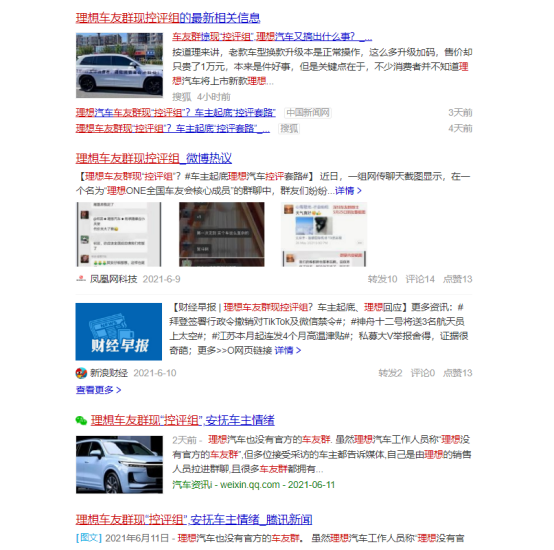
There is no clear reply or clarification from the Ideal Auto regarding this matter. Do car owners not know that brand owners will pay attention to user feedback in social media communities as private domain space?
To get to the bottom of this, I opened the Ideal App; however, I can hardly find any negative reviews or complaints regarding the redesign on the recommendation page. Friends who are familiar with network social media platform operations know that the official background can directly reduce the exposure of negative content through algorithms and other operations. This kind of operation has long been commonplace in private domains.
Following the principle of getting to the bottom of things, I entered the Ideal Community’s Q&A section, a section dedicated to users to answer questions, but still did not get any substantial results. Disgruntled, I directly entered “Redesign” into the community search bar and finally found some dissatisfied users who were harvested by Ideal as fresh chives. However, in these posts, almost none of the users with the “Li” Ideal staff logo came to maintain stability.
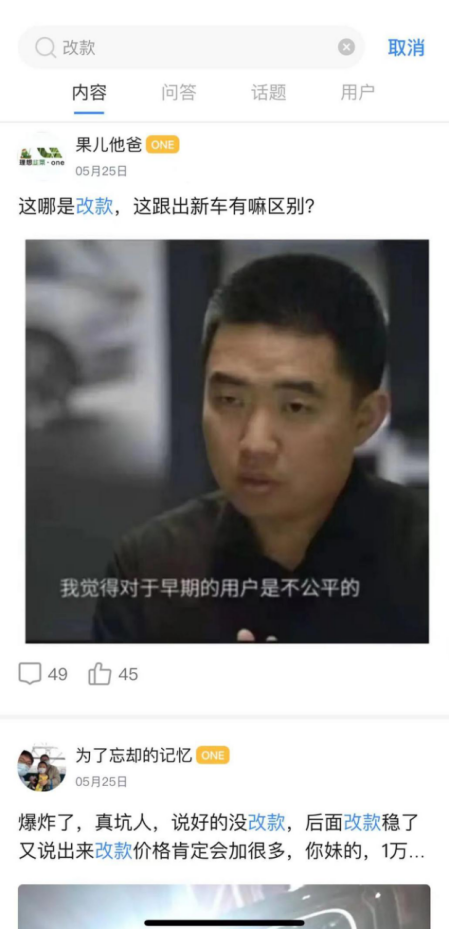
Such incidents are not uncommon in communities. When I opened the XPeng Motors’ Community App, it automatically jumped to the recommendation section. In the recommendation section, users can see more “quiet days and good times” and many of these contents come from users who have been treated with “continuous combos.” Almost no negative reviews and complaints from old users about the product can be seen in the recommended section. Therefore, I searched for “Deletion of Posts” in the XPeng’s Community separately.
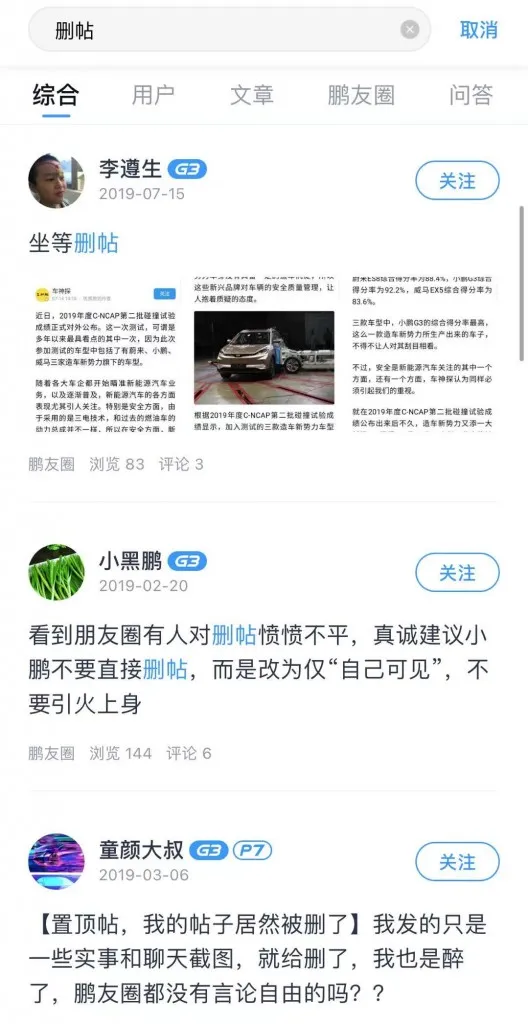
As expected, the answer was the same. Users in each community expressed dissatisfaction with post deletion. However, this does not mean that the community is a completely “gray area” that stifles consumer opinions. First and foremost, we must be clear that in the age of the Internet, which platform and domain can achieve real freedom of speech?
In community marketing, gradually guiding users to achieve brainwashing effects exists, and the phenomenon of deleting posts to maintain brand image also exists. But this cannot deny the benefits that new forces in the automotive industry bring to users through communities and apps. Its existence allows the most direct communication between users and companies, redefining the relationship between enterprises and users.
Just like in the NIO App, in addition to posting and exchanging in the community, every Fellow will also bring their responsible customers into their service groups. When users encounter product problems or dissatisfaction, they can directly provide feedback in the service group, and the brand will give real-time answers to the users’ problems. This “online” after-sales service truly demonstrates the new forces in the automotive industry as a user-friendly enterprise.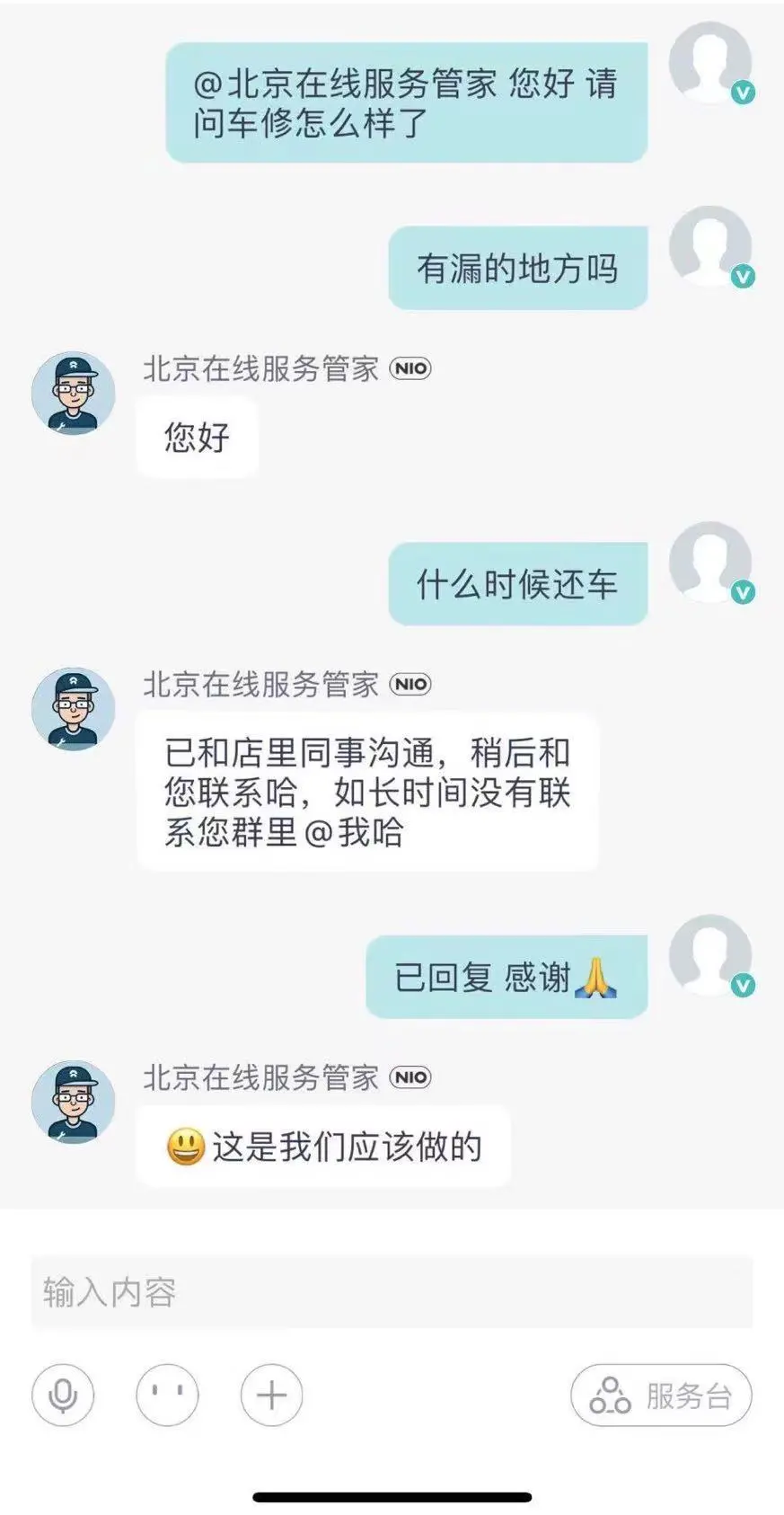
Not only that, NIO’s technicians, staff, and even the leader Li Bin will also contribute their daily activity as an “enterprise tool” in the community. Similarly, other new forces in car making such as Li Xiang and XPeng are also doing the same. This approach of answering users’ constructive comments and interactive content from the perspective of top management is no different from giving users a tranquilizer, making them feel the care of the brand and the responsibility of the enterprise.
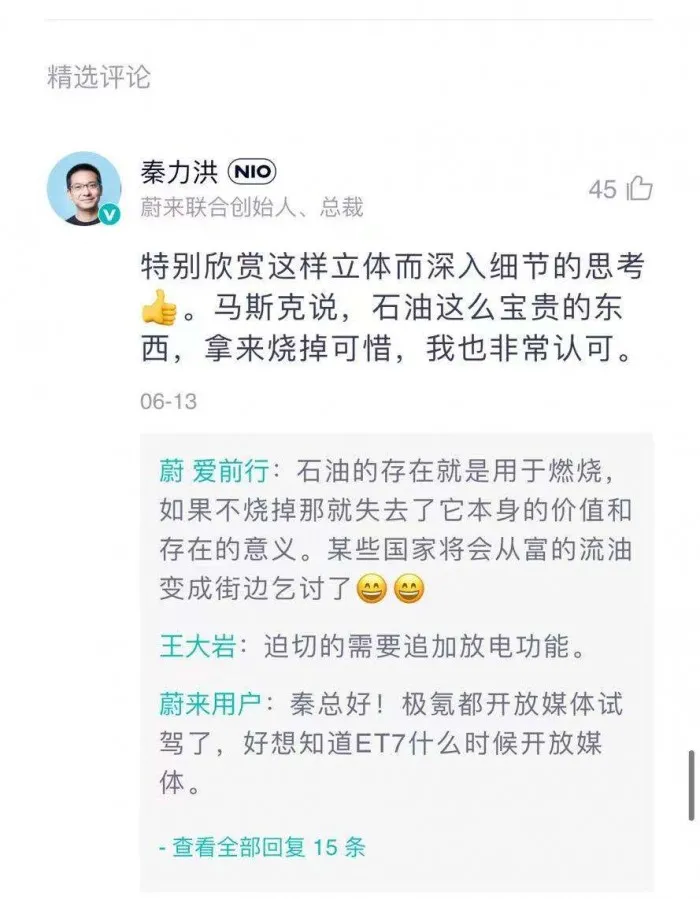
Conclusion
Zhu Jiang, former vice president of user development at NIO, once said, “If you want to know NIO well, you don’t have to be a car enthusiast. Just take a look at NIO’s app.” Looking back now, this sentence is indeed true. Looking more at the apps of new carmakers like NIO, you may not necessarily become a car owner, but you are very likely to become a “fan.” For users, it may not be 100% “real” to see the entire community, but it can help users understand the product without being influenced by dealers or media, and the brainwashing is only to improve brand awareness. The communication space created by the community for users and the “direct connection” service with the manufacturers is the field that traditional car companies cannot touch before transformation.
This article is a translation by ChatGPT of a Chinese report from 42HOW. If you have any questions about it, please email bd@42how.com.
